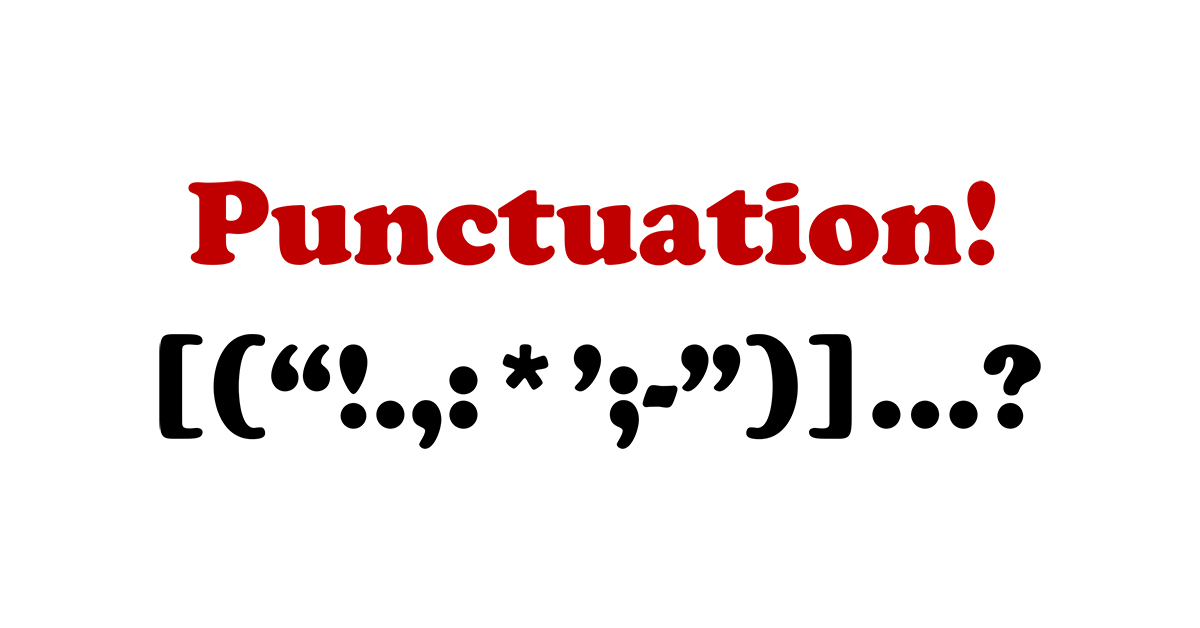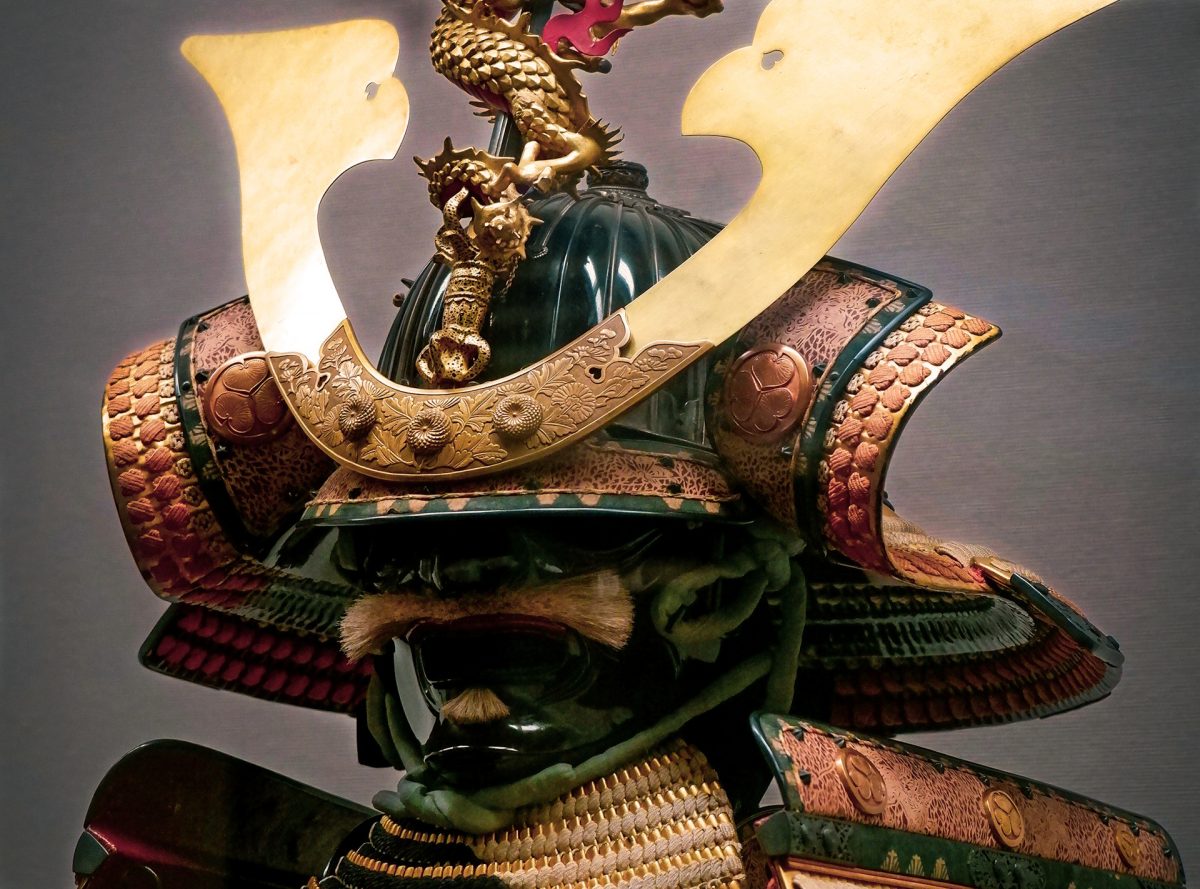
(*Linked or embedded content may have been removed or be unavailable.)
Did you know that September 24th is National Punctuation Day? Well, at least it is in the US. But if you didn’t know, well, don’t worry. Most people are even less aware of ‘punctuation day’ than they are of punctuation itself. Punctuation has always been there, like the air we breathe. Sometimes we even choke on it for various reasons. But aside from that, it’s not something you think about all the time. So, let’s look back and see how we got to where we are.
Contents
Looking back to the world pre-punctuation
Imagine being thrown back in time, to a place where Classical Greek or Classical Latin was used. Their style of writing was something called scriptio continua (continuous script) where there weren’t even any spaces between words, let alone punctuation. Only uppercase letters were used (lowercase didn’t exist yet), making it difficult to know where words and sentences began and ended.
Back then, the purpose of writing was to record things that were being said to create documentation. Much the way an executive dictated a letter to a secretary in the 20th century, Roman citizens many centuries earlier dictated their texts to enslaved scribes. The lack of spacing and punctuation meant
COLLECTAMEXILIOPEBUM
could be read as
COLLECTAM EX ILIO PEBUM (people gathered from Troy)
or
COLLECTAM EXILIO PEBUM (people gathered for exile).
This required that the reader be well educated and well aware of the context behind the text for it to be read correctly. And sure enough, it was mostly the ruling class that was literate at this time.
The same can be said in other parts of the world, too. For instance, logographic script such as Chinese didn’t use punctuation either. And as is the case with other Asian languages that haven’t adopted the Roman alphabet as their mode of delivery, Chinese characters are equally spaced with no extra spacing between words.
Necessity is the mother of invention and punctuation
Lack of clarity becomes a problem, especially when the written word travels farther and context can no longer be taken for granted. Thus, in medieval Europe, punctuation developed dramatically with the production of large amounts of the Bible. As scripture was translated into Latin, early versions of punctuation as well as indentations were introduced to aid the reader. Then in the 7th through 8th centuries, more visual aids and the practice of word separation were introduced by Irish and Anglo-Saxon scribes whose native languages were not Latin based. Note that the punctuation back then still wasn’t what we’d recognize today, with elements like one dot for a minor pause, two for medium, and three aligned triangularly for a long pause.
Scribes were also the inventors of simplified minuscule characters (what we call ‘lowercase’ today) as a way to speed up their writing, and originated the exclamation mark (!) by adding the Latin exclamation “io” (joy) at the end of a sentence, which morphed into its current form during the 14th century. Likewise, the question mark (?) is ascribed to the word “quaestio” (question) being added to ends of sentences, getting abbreviated over the years into a Q-like shape. Either that, or it’s the shape of an inquisitive cat’s tail, as some suggest it comes from an ancient Egyptian symbol.
The invention of the letterpress with movable type by Johannes Gutenberg in the 15th century ushered in the era of mass printing, kicked off with Martin Luther’s German version of the Bible. But as more and more content got pushed out into the world in printed form, people had less and less time to analyze and ponder the meaning of each (sounds familiar, doesn’t it?), making further standardization of punctuation necessary to not just specify the length of a pause, but to clarify syntax.
The age of standardization, adoption and adaption
The terms ‘uppercase’ and ‘lowercase’ that we use today come from the letterpress, where movable type was stored with large letters (ABC) in the upper case, and small letters (abc) in the lower case. Literally in cases.
As printers far and wide began adopting this system of printing, this necessitated the standardization of typography, including punctuation marks. By this time we already have the lineup of punctuation marks that we continue to use today, for the most part.
With any type of standardization, however, there are exceptions and local preferences. Take the decimal separator, for example. In the English-speaking world, people use the period (.), but in many European countries including Germany, France and Italy, they use the comma (,) instead. On the flip side, these countries use the period (.) instead of the comma (,) for the delimiter separating every three digits in a large number. This inconsistency between languages can sometimes pose a challenge even today for MT (Machine Translation) or the inexperienced human translator.
Quotation marks look like “these” in English, but the Germans use „diese“, the French use « ces », the Danes use »disse«, the Croats use „ovi”, and the Japanese use「これ」。 (That small circle at the end of the previous sentence is the Japanese period, by the way.) So when you’re involved in localizing your content over multiple languages, checking for any unnatural looking punctuation marks (from the standpoint of the audience) might be a relatively simple, yet wise, thing to do.
But don’t go overboard. People who’ve worked in the localization industry for some time all have their own horror stories about clients who want to “correct” what they see as odd-looking punctuation. “Correct those decimal points from commas to periods in the French translation.” “Delete those funny upside-down question marks in the Spanish translation.” “The Japanese source text has four commas in it, so the English translation should also have four commas to be correct.” These were all comments made with the best of intentions, by non-native checkers who sought to ensure quality the only way they knew how.
Shifts in technology have also impacted punctuation marks over the years. The typewriter, which spread into offices beginning in the 1880s and remained a standard fixture in offices until the 1980s, had a limited number of characters. The straight quotation marks (“) and apostrophe (‘) we use in this blog post entered the character set in place of the right and left curvy ones around this time. Even as the typewriter evolved from manual to electric, character sets continued to be limited by the physical limitations of the hammers, ball or daisy wheel type elements. And as computers replaced typewriters, the character set was still limited to 128 characters in the beginning (ASCII standard). This has subsequently grown to 149,813 characters under Unicode Ver. 15.1.
Today punctuation is more accessible than ever before. Even in languages that don’t have word separation such as Chinese, Japanese and Korean, punctuation marks like the exclamation mark are a common sight bordering on the overused. Unicode is likely to put punctuation marks from just about any language right at your fingertips. All is well. But wait, something else is happening.
Is punctuation headed toward extinction?
Social media in particular, and the always-connected digital era in general, are posing a major threat to punctuation as more and more people post messages online that ignore the rules. Usually these messages are short, highly contextual, and sent in a hurry, so speed is of the essence. Messing with punctuation is a time-consumption they simply can’t afford. As a result,
some messages may even be in all lowercase
OR IN ALL CAPS FOR EMPHASIS.
with little regard for punctuation aside from a lot of !!!!!
But hopefully, legitimate content providers who are serious about maintaining their image will continue to keep good punctuation practices in mind, in the language they’re delivering, for the sake of their audience. After all, what’s the point in sending out a message if it’s misunderstood.
Douglass McGowan






